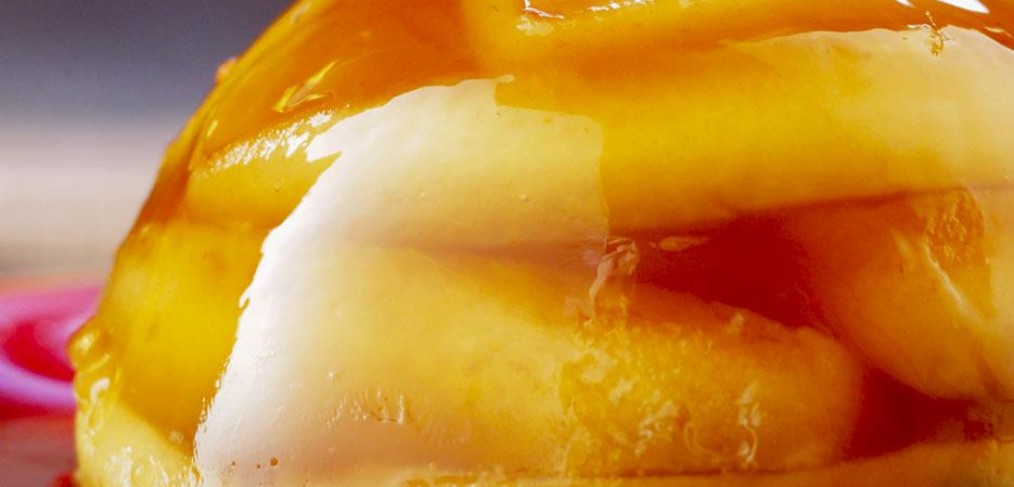FOOD SHOPPING GUIDE: SPRING AND SUMMER FRUIT
Craving apricots, strawberries or melons? Here is a list of things to bear in mind when you are standing at your grocery’s counter or shopping for summer fruit.
When I was a little girl, it wasn’t so much the sight of pansies in the garden but the first taste of strawberries which heralded the arrival of spring. Red and fragrant: even non-foodies can rely on their instinct to recognise the quality of spring and summer fruit. This leads us to the first rule: the flavour of sunshine emerges from the very first bite.
The most important factor influencing the taste of fruit is ripeness. But how can the poor consumer buy fruit without tasting it? If the shopkeeper discourages his customers from doing so (contrary to the fascinating local markets where this is still the norm), it is up to us, wherever in the world we are, to seek out the marvellous scent of strawberries that will guide us towards making a wise choice. Fruit that has ripened on a tree or plant will have a different flavour from that grown in a greenhouse or stored for days in a warehouse. What makes the difference in quality food – and summer fruit and vegetables are a perfect example – is their intrinsic vitality. Fruit can be dead or alive.
Your sense of smell will be your most precious ally: when shopping for strawberries, cherries, raspberries, blackberries and blueberries, it will be your guiding light. Learn to use it and it will be invaluable for all types of fruit and other foodstuffs as well. On the subject of strawberries, there is one golden rule to follow: their taste is inversely proportional to their size. The tiny ones hand- picked in the woods in June cost a fortune. Greenhouse-grown fruit and vegetables are not seasonal products since the climatic conditions of greenhouses are created artificially. However, without wishing to condemn greenhouse crops, we have to bear in mind that we are not buying seasonal fruit.
Always remember that you are entitled to ask where the produce comes from, if this is not specified on the packaging. When buying fruit, prefer locally grown or organic products. Furthermore, as a general rule, the skin or peel of any type of fruit should be intact, without cuts, blemishes or bruises.
Small fruits, up the size of apricots, are sold in baskets or plastic boxes which are sometimes transparent. One of the commonest tricks employed by shopkeepers is to display the freshest and healthiest strawberries or cherries whilst concealing those that are too ripe and slightly mouldy. Try not to buy baskets that are closed in such a way as to prevent the fruit being examined. The ideal customer is a shrewd lady who, before buying a basket of blackberries, insists on the shopkeeper turning it out on the counter each time and only putting back the healthy ones: if we think about it, why should we pay for fruit that is going to go straight into the rubbish bin?
Buying a good melon is tantamount to buying a lottery ticket. Check the weight: the melon must have a correct weight in proportion to its size; the stalk should detach easily and the sides should give slightly when pressed. The scent of the melon should be noticeable without being too sweet, which would indicate over-ripeness; the footstalk should not be withered – it is ripe when soft rather than dry, and easily detachable. Also in the case of water melon, pay attention to the footstalk which should never be excessively dry. Avoid those fruits with a yellowish skin or which sound empty when tapped. The flesh should have a scarcely compact appearance, with a light texture and an abundance of filaments.
Apricots should be deep yellow and, in the case of some varieties, show small freckles on their skin, which indicates that they are ripe and ready for eating. Appearance is all-important in the case of peaches and apricots whose skin should be velvety, intact and blemish-free. Peaches should be firm to the touch without being excessively hard and should not have any bruised or soft areas. The skin colour should also be bright. A final hint: despite the fact that this fruit ripens in the warm spring-summer climate, it does not take kindly to refrigeration.
Read the full article on Fine Dining Lovers.com
Fine Dining Lovers.com – 16 aprile 2015

